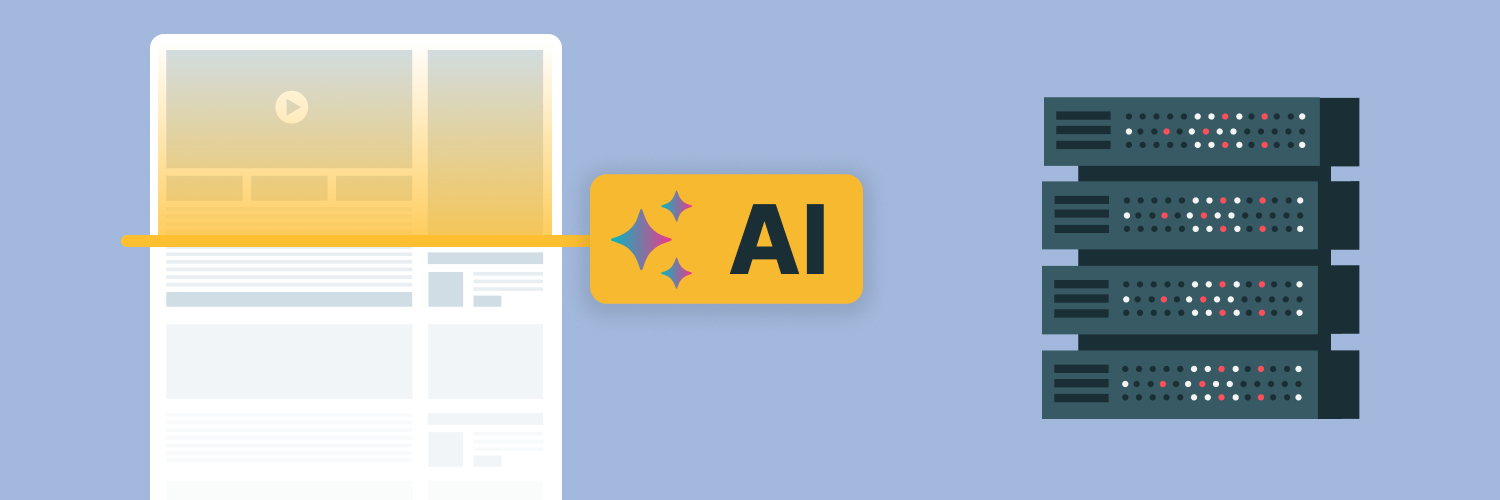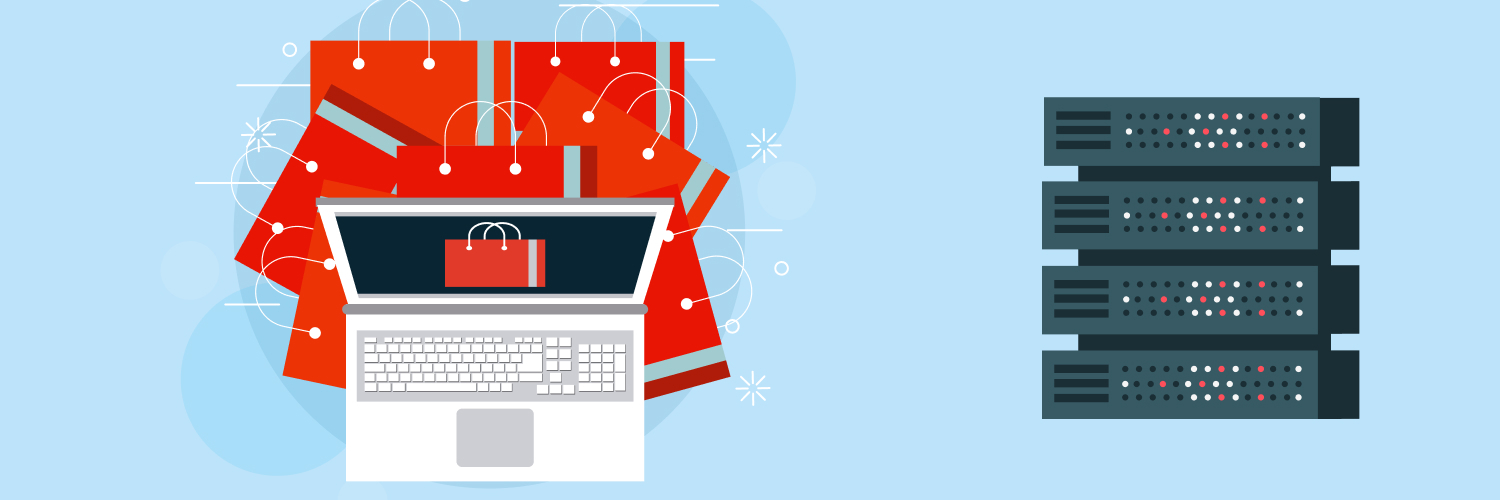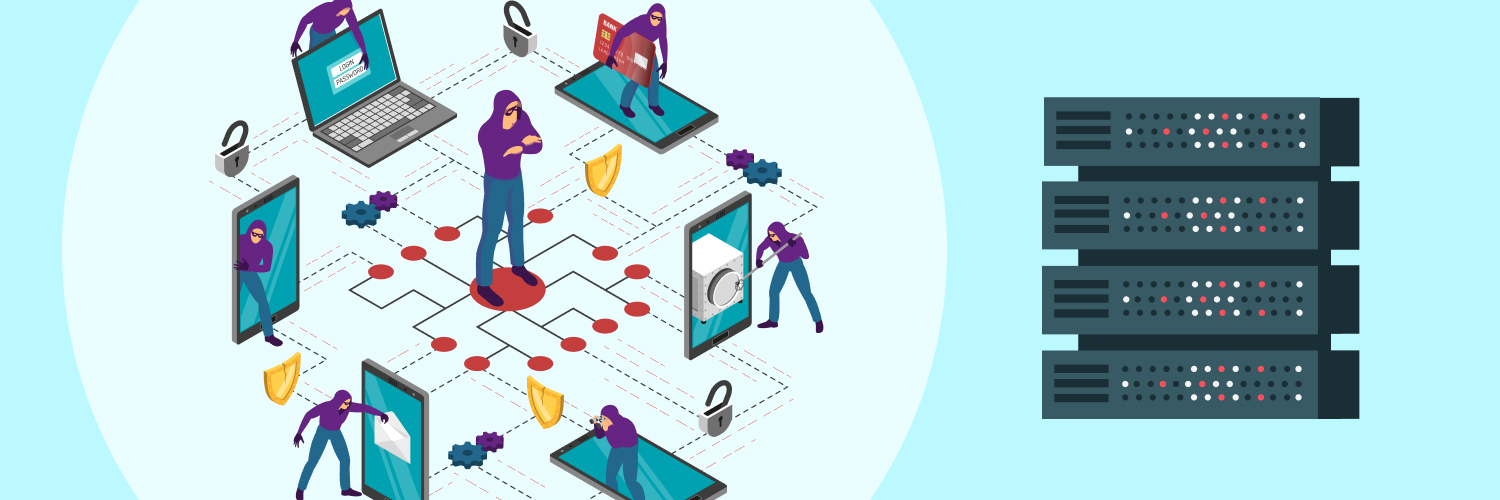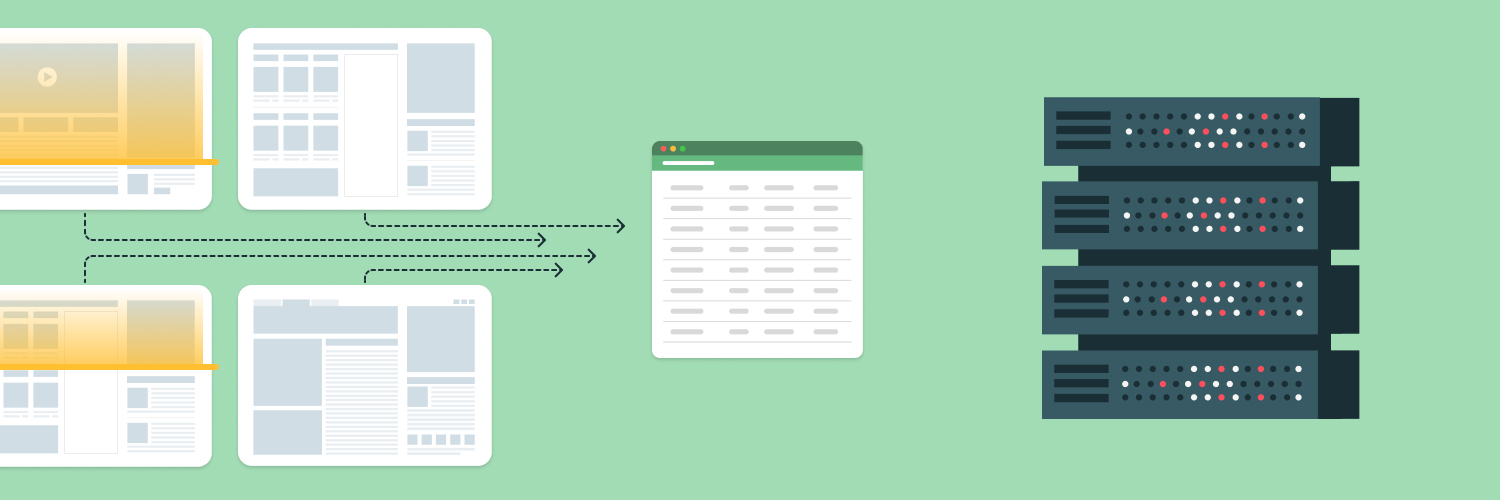Optimizing Your Scraper for Speed Without Burning Through Proxies
Speed and stability always feel like opposing forces when you’re running a scraper at scale. Push your scraper too hard and you burn through your proxy pool faster than you can refill it. Go too slow and someone else beats you to the data, or your dashboards lag behind what’s really happening in the world. The solution lies somewhere in the middle, and finding it is what web scraping optimization is all about.
At its core, optimization is a combination of smarter request logic, a streamlined codebase, and intelligent proxy usage. It’s not just “make it fast” or “throw more proxies at it.” Instead, you want a scraper that moves quickly when it can, slows down when it should, and uses your infrastructure in the most efficient way possible. Web scraping speed depends on various techniques, including adjusting scraping logic and employing automation tools, to address bottlenecks and improve efficiency. When you do that well, you see fewer blocked requests, lower costs, and faster results, all while collecting only the public data you actually need.
In this guide, we’ll walk through the most important components of scraper optimization, from identifying performance bottlenecks to tuning concurrency, improving request logic, managing dynamic content, and using proxies responsibly. If your goal is to speed up your pipeline without watching your proxy usage skyrocket, you’re in the right place.
Ready to Eliminate Bans?
Need faster scraping and more reliable proxies? We can help.

Understanding Web Scraping Bottlenecks
Every slow web scraper has a bottleneck, and it’s rarely the same thing in every system. Sometimes the target website is slow. Sometimes the issue is CPU-bound parsing. Sometimes your code is doing far more work than it needs to. And occasionally it’s all of the above.
Before you introduce concurrency or add more proxies, you need to understand where the slowdown actually comes from. Otherwise, you’re layering complexity on top of inefficiency, which is how scrapers become brittle and expensive. Inefficient request behavior can also contribute to bottlenecks.
Slow Server Responses Aren’t Your Fault, but You Have to Plan for Them
Some target servers respond slowly when they’re under load or when they see a lot of automated traffic in a short window. Others are simply slow because they’re serving dynamic content, hitting heavy databases, or experiencing high traffic. The response time of the target server is a key factor in scraping speed. If your scraper assumes the target server will respond instantly, you’ll end up with requests waiting in line like customers at a busy coffee shop.
This is where techniques like asynchronous programming or well-managed thread pools become useful. Instead of waiting idly for one response, your scraper can initiate other tasks in parallel.
Inefficient Code Adds Latency That Has Nothing to Do With Proxies
A surprising amount of scraping slowness comes from the code running after the request is complete. Serial loops, repeated parsing, unnecessary data transformations, sprawling logging output; these things accumulate quickly.
For example, parsing the same HTML multiple times because each extraction function takes the full page as input is a silent performance drain. So is logging every request in detail when you’re making thousands of them. None of this helps speed or accuracy, and all of it slows down your scraper.
CPU and I/O Limits Can Flatten Performance
Scrapers often hit I/O bottlenecks when:
- They’re writing too much to disk
- They’re sending requests faster than the network can handle
- They’re reading large files repeatedly
CPU bottlenecks typically show up when you use heavier parsers or your post-processing logic is too complex to run efficiently in a single thread.
IP Blocks Stop Speed in Its Tracks
Even the most elegant scraper can’t outrun an IP block. If your requests start returning CAPTCHAs, 403s, or incomplete data, your scraper’s speed doesn’t matter — it’s stuck. CAPTCHAs are specifically designed to restrict automated access by presenting challenges that distinguish human users from scripts. Blocks force retries, retries burn proxies, and proxies aren’t free. Sustainable speed is always better than reckless speed.
Understanding the root cause of your bottleneck is what allows you to fix it properly. From there, the rest of your optimization strategy can actually work as intended.
Choosing the Right Proxies
Proxy selection is one of the biggest factors in how fast, and how efficiently, your scraper runs. Proxies act as intermediaries that mask your IP address and facilitate proxy rotation, helping you maintain stability and reduce the chance of being rate-limited or blocked when scraping websites. Not every proxy type is suited for every job, and choosing the wrong type will slow you down no matter how well-engineered your scraper is.
Datacenter Proxies: Fast and Efficient for the Right Targets
Datacenter proxies are the fastest and least expensive option. They’re perfect for websites without strict controls and for large-scale scraping where efficiency and speed matter more than looking exactly like a typical end user. If the target website doesn’t aggressively identify automation, datacenter proxies offer unbeatable performance.
Residential Proxies: Higher Trust, Higher Reliability
Residential proxies come from real household IPs. They’re slower and more expensive than datacenter proxies, but they offer significantly higher trust with many websites. For pages where you need consistency, reduced friction, or higher success rates, residential proxies are often the better choice. They help you maintain stable sessions and avoid unnecessary retries — which is a key factor in controlling proxy consumption.
Mobile Proxies: Powerful, But Only When Necessary
Mobile proxies are the most trusted type because they come from mobile carrier networks, which naturally rotate user IPs. These proxies use mobile IPs, originating from mobile network towers, and often align closely with typical mobile user traffic patterns. They’re powerful for mobile-only content or extremely sensitive websites. But they’re also the most expensive option, so they should be used intentionally, not as a default.
A Mixed Proxy Strategy Saves Money and Boosts Speed
Many large-scale scraping setups combine proxy types strategically. For example:
- Use datacenter for broad scraping of static content
- Use residential for login pages, rate-limited endpoints, or sensitive targets
- Use mobile only for specific mobile-rendered content
The goal is to use the fastest, least expensive proxy type that still performs reliably for that category of data.
Proxy Management and Rotation
Even with high-quality proxies, misuse leads to early blocks, wasted bandwidth, and unnecessary costs. Proxy management is just as important as the proxies themselves. Effective proxy management requires ongoing attention to keep your setup stable and efficient.
Rotating Proxies Intelligently (Not Randomly)
A good rotation strategy spreads your requests across multiple IPs to avoid suspicious patterns. But many scrapers rotate too aggressively, switching the proxy every request, even when it’s unnecessary. This looks more automated, not less.
A more natural pattern is rotating based on:
- A set number of successful requests
- A time interval
- A change in the website’s behavior (slower responses, partial content, etc.)
Using signals, not pure randomness, is the key to proxy efficiency.
Session Persistence Matters
Some websites behave better when you maintain a stable session using cookies. If your scraper switches proxies too frequently, you’ll lose that session continuity. That leads to forced logouts, session resets, or inconsistent data, and more retries.
Smart rotation means balancing stability and anonymity in a way that aligns with typical user patterns, while still keeping your infrastructure protected.
Dynamic Throttling Helps You Maintain Speed Without Triggering Blocks
Dynamic throttling adjusts your request rate based on how the server responds. If you see:
- More 429 errors
- Slower response times
- Partial page loads
- Sudden CAPTCHAs
You slow down. Once the signals improve, your scraper can speed back up.
This approach keeps your pipelines running quickly while avoiding the proxy-burning “retry storm” that happens when a website pushes back.
Optimizing Proxy Usage
Proxy efficiency isn’t just about preventing blocks. It’s also about avoiding unnecessary consumption. Every request you make costs bandwidth, infrastructure, and proxy resources. The fastest scraper is the one that sends only the requests it truly needs.
In addition to caching API responses and static assets, caching full HTML pages can reduce redundant requests and improve efficiency.
Caching Prevents Redundant Requests
If the data hasn’t changed since the last run, why fetch it again? Caching allows you to store:
- Full HTML documents
- API responses
- Parsed objects
- Timestamps
- Content hashes
Instead of re-downloading the same page every time, you only request data when it has changed. This alone can cut your proxy usage by quite a significant amount.
Reduce the Load of Each Request
If you’re scraping HTML, you don’t need:
- Fonts
- Stylesheets
- Images
- Videos
- Analytics scripts
Blocking these resources makes your scraper faster and significantly reduces proxy bandwidth consumption.
Use Connection Pooling To Avoid Rebuilding Sessions Repeatedly
Opening a new TCP connection for every request is one of the most overlooked performance drains in scraping. Connection pooling reuses connections where possible, shaving off latency and reducing overhead.
Schedule Jobs During Off-Peak Hours
Traffic patterns matter. Many websites are more responsive, and less restrictive, during quieter hours. If your scraper can run at midnight, you may see:
- Faster responses
- Fewer blocks
- Lower proxy churn
The easiest optimization is simply choosing a better time of day.
Handling Failed Requests Efficiently
Failed requests are the silent proxy killer. Every failure creates a chain reaction:
Failure → Retry → New Proxy → Higher Cost
You can’t eliminate failures entirely, but you can tame them.
Exponential Backoff Reduces Waste
Instead of retrying a failed request immediately, exponential backoff gives the target website time to recover. It also reduces the intensity of your scraping pattern, lowering the chance of triggering further blocks.
Ready to Eliminate Bans?
Need faster scraping and more reliable proxies? We can help.

Switching Proxies Only When Signals Demand It
Not all failures mean the proxy is “burned.” A network glitch or temporary rate limit doesn’t require abandoning an IP. Intelligent retry logic helps you avoid discarding perfectly good proxies.
Using Thread Pools To Keep the System Moving
Thread pools help ensure that a few retries don’t clog your entire pipeline. While one thread handles a retry, others continue processing new tasks. By running multiple threads concurrently, your scraper can handle retries and new tasks at the same time, significantly improving efficiency. This allows your scraper to maintain momentum even under imperfect conditions.
Improving Request Logic
Request logic is one of the most underrated parts of a scraping system. It determines how your scraper interacts with the website, and how natural that interaction appears.
Randomized Delays Feel More Human Than Fixed Delays
A fixed delay between requests is predictable. Randomized, natural variations more closely resemble organic traffic patterns. This simple change can help reduce blocks and slow down proxy consumption without sacrificing overall throughput.
Varying User-Agents and Managing Cookies
Rotating user-agents helps your scraper appear as if requests come from different devices and browsers. Managing cookies and reusing sessions also keeps your behavior consistent across multiple requests.
Implementing Rate Limiting From Your Side
Rate limiting isn’t just something websites do. You can build your own rate limiter into your scraper to prevent bursts of requests that look aggressive. This isn’t about slowing your scraper down, but pacing it intelligently so it can keep running for the long term.
HTML Parsing and Data Extraction
Even if your requests are blazing fast, slow parsing will drag down the entire system. The good news is that parsing is one of the easiest things to optimize.
Choose Efficient Parsing Libraries
Some parsers simply perform better:
- lxml is extremely fast and widely used
- selectolax is even faster and great for high-volume work
- BeautifulSoup is easy to use but slower
If you’re parsing hundreds of thousands of pages, choosing the right parser can save hours.
Parse Once, Extract Many
A common mistake is re-parsing the same HTML multiple times for different extraction functions. Parsing should happen once. Your scraper should grab everything it needs in a single pass.
Process HTML in Parallel
Parsing is often CPU-bound. That means multiprocessing is ideal, each core handles part of the workload independently. If you combine parallel parsing with async fetching, you get a system that moves quickly on both fronts.
Using Headless Browsers (When Necessary)
Headless browsers are incredibly useful, but they’re also expensive in terms of time, CPU, and proxy usage. They should be reserved for cases where you genuinely need JavaScript rendering.
Some web scraping APIs and tools try to help with things like automated challenges, but from our perspective, the more sustainable and responsible approach is to design your scraping so you minimize triggering those challenges in the first place.
Use Them Only for JavaScript-Heavy Content
If the site delivers the data through a hidden JSON API, use the API where it’s allowed. If the content loads in the initial HTML, avoid the browser entirely. Headless browsers are a last resort, not the foundation of your scraper.
Optimize the Browser Environment
If you must use a headless browser, streamline it:
- Block images, videos, and fonts
- Use multiple browser instances
- Reuse browser sessions when appropriate
- Skip full page loads when possible
Even small browser optimizations can drastically improve speed.
Ready to Eliminate Bans?
Need faster scraping and more reliable proxies? We can help.

Parallel Processing and Concurrency
Concurrency is where scrapers see the biggest speed boost. Instead of waiting for one request to finish before starting another, you let multiple operations run at the same time. With multithreading, these operations share the same memory space, which can improve efficiency for certain tasks.
Multithreading for I/O-Bound Tasks
Fetching web pages is I/O-bound. Threads shine here because they can initiate new requests even while others wait for server responses. If your bottleneck is network latency, multithreading helps.
Multiprocessing for CPU-Bound Parsing
Parsing large HTML documents or processing data is CPU-heavy. Because of Python’s Global Interpreter Lock, multiprocessing lets you break free and use all available CPU cores effectively.
Asynchronous Programming for High-Volume Scraping
Async allows you to handle thousands of concurrent requests with ease. As long as you’re using an async-compatible HTTP client, it’s one of the most efficient ways to increase speed without proportionally increasing proxy usage.
Concurrency doesn’t just speed things up, it also makes your scraper more resilient. Tasks can fail independently without stopping the entire run.
Avoiding Inefficient Code
You can have great proxies, perfect rotation logic, and strong concurrency. but if your code is inefficient, it’ll still lag behind.
Reduce Logging
Debug-level logs are great during development but expensive in production. Logging every request can slow you to a crawl.
Use Efficient Data Structures
Choosing the right structure, lists, sets, dictionaries, can dramatically reduce processing time.
Avoid Repetitive Operations
Repeated parsing, repeated disk writes, repeated session creation; these all add latency. Every repeated action is an opportunity to cache or streamline.
Handling Dynamic Content
Dynamic websites can slow scrapers down dramatically. JavaScript rendering, multiple request chains, and client-side updates all add steps between request and data. With containerization, dynamic content can be handled efficiently whether the scraper runs on a local machine or in the cloud, making management and scaling easier.
Identify Underlying APIs
Many sites load data from JSON endpoints. If you can fetch that JSON directly, and it aligns with the site’s terms and your use case, you avoid the overhead of parsing and rendering.
Use Concurrency to Offset Load Times
Combining async HTTP requests with multiprocessing parsing is one of the best ways to handle dynamic sites efficiently.
Maintain Session Continuity
Dynamic sites often rely on cookies or session tokens. Carrying these forward reduces errors and improves success rates.
Scaling Your Web Scraping Operations
Scaling your web scraping operations is about building a system that can handle large-scale data extraction efficiently and reliably. As your data extraction needs grow, leveraging multiple IP addresses and optimizing proxy usage become essential to avoid bottlenecks and maintain high throughput.
A robust scaling strategy often starts with the right mix of proxy types. Datacenter proxies are ideal for high-volume scraping operations where speed and cost-effectiveness are priorities, especially when targeting sites with minimal anti-bot defenses. For more sensitive targets, residential proxies offer greater stability and reliability, helping your scrapers operate consistently on sites with stricter controls.
To truly scale, advanced techniques like multiprocessing and parallel processing are key. By distributing scraping tasks across multiple processes or threads, you can maximize your local machine’s resources and significantly speed up the web scraping process. This approach allows you to send multiple requests in parallel, making the most of your available proxy bandwidth and reducing the risk of slowdowns.
However, with increased request volume comes the risk of IP bans and rate limiting. Smart proxy rotation is crucial, rotate proxies based on request count, time intervals, or server feedback to avoid triggering automated defenses. Monitoring proxy bandwidth usage and adjusting your rotation strategy means you don’t burn through proxies unnecessarily, keeping your scraping operations sustainable and cost-effective.
In short, scaling web scraping is about combining the right infrastructure, multiple IP addresses, datacenter proxies, residential proxies, with advanced parallel processing and careful proxy management. This lets you extract more data, faster, without running into the common pitfalls of large-scale data extraction.
Common Challenges and Solutions
Every web scraping project faces its share of hurdles, from slow web scraping speeds to aggressive anti-bot measures. The good news is most challenges have proven solutions that can keep your scraping operations running smoothly.
Slow web scraping is often caused by inefficient scraping logic or bottlenecks in your code. Streamlining your scraping script, optimizing HTML parsing, and blocking unnecessary resources can help you reclaim lost speed. When dynamic content loading is involved, using headless browsers or JavaScript rendering ensures you capture all the data, even from JavaScript-heavy pages.
IP blocks and automated defenses are a constant consideration, especially as you scale up. Rotating proxies, whether datacenter, residential, or mobile, helps distribute requests and keep traffic patterns more natural, making it harder for target websites to classify your traffic as abusive. Adding random delays between requests further reduces the risk of being flagged for sending too many requests in a short period.
For large-scale scraping operations, it’s essential to distribute requests across multiple processes or threads. This not only speeds up data extraction but also prevents overloading the target website, which can trigger rate limits or blocks. Advanced techniques like multiprocessing import pool or thread pool can help you manage multiple tasks efficiently.
While free proxies might seem tempting, they often come with slow speeds, frequent IP blocks, and unreliable performance. For commercial web scraping operations, investing in high-quality web scraping proxies is a must for consistent results.
By combining rotating proxies, smart request distribution, and efficient scraping logic, you can overcome the most common web scraping challenges, even on sites with dynamic content and robust automated protections.
Web Scraping Best Practices
To get the most out of your web scraping operation, following industry best practices is essential. Not only do these practices help you extract high-quality data efficiently, but they also protect your infrastructure and reputation.
Respect website terms of service and avoid scraping sensitive or restricted data. Focus on collecting publicly available information in a way that’s responsible and sustainable.
Optimize proxy usage by choosing the right proxy type for each task. Datacenter proxies are perfect for static content and high-speed scraping, while residential proxies are better for sensitive targets that require higher trust. Monitoring request volume and adjusting proxy rotation helps you avoid IP bans and stay within rate limits, ensuring reliable performance.
Implement efficient HTML parsing by using fast, lightweight libraries and avoiding repetitive operations. Multiprocessing or multithreading can help parallelize scraping tasks, significantly speeding up the web scraping process and reducing the time to extract data from target websites.
Keep infrastructure costs in check by minimizing excessive logging and redundant requests. Internal monitoring and proxy optimization tooling can help you track usage, reduce bandwidth consumption, and improve the overall reliability of your scraping operation.
Finally, always be ready to adapt. As target websites evolve their defenses and change how they deliver content, staying up to date with advanced techniques, like dynamic proxy rotation, session management, and distributed scraping, will keep your web scraping process efficient and effective.
By following these best practices, you’ll build scraping operations that are fast, resilient, and ready to scale, delivering the data you need without burning through proxies or inflating costs.
Bringing It All Together: Faster Scraping, Lower Proxy Burn, Better Results
Optimizing your scraper is all about layering the right strategies so your system becomes faster, more resilient, and far more cost-efficient. The sweet spot is when your scraper feels fast and your proxy usage stays predictable. That only happens when you tune every part of the pipeline:
- Efficient request logic
- Smarter proxy rotation
- Concurrency that actually matches your workload
- Faster parsing
- Cleaner, leaner code
- And just enough caution to avoid unnecessary blocks
When these pieces work together, you get a scraper that delivers speed and sustainability. You scale without wasting infrastructure. You collect more public data with fewer retries. You build something that feels reliable, not fragile.
At that point, your scraper becomes an engine, one that just runs.
Working With Rayobyte
If you’re looking to take that next step, higher throughput, higher reliability, fewer blocks, and stronger overall performance, your proxy partner matters just as much as your scraper architecture.
Rayobyte was built specifically for scraping teams who care about:
- High-quality, ethically sourced proxies
- Consistent uptime and predictable performance
- Transparent, compliant data collection
- A partner who understands how scraping actually works
- Reducing block rates without inflating costs
Because let’s be honest, even the best scraper in the world struggles when it’s paired with unstable, inconsistent proxies. That’s why engineering teams, data providers, AI companies, and research orgs rely on Rayobyte to power their scraping operations. Whether you’re dealing with large datasets, frequent refresh cycles, or complex scraping workflows, we focus on giving you the clean, stable proxy infrastructure you need to run efficiently.
Ready to Eliminate Bans?
Need faster scraping and more reliable proxies? We can help.




